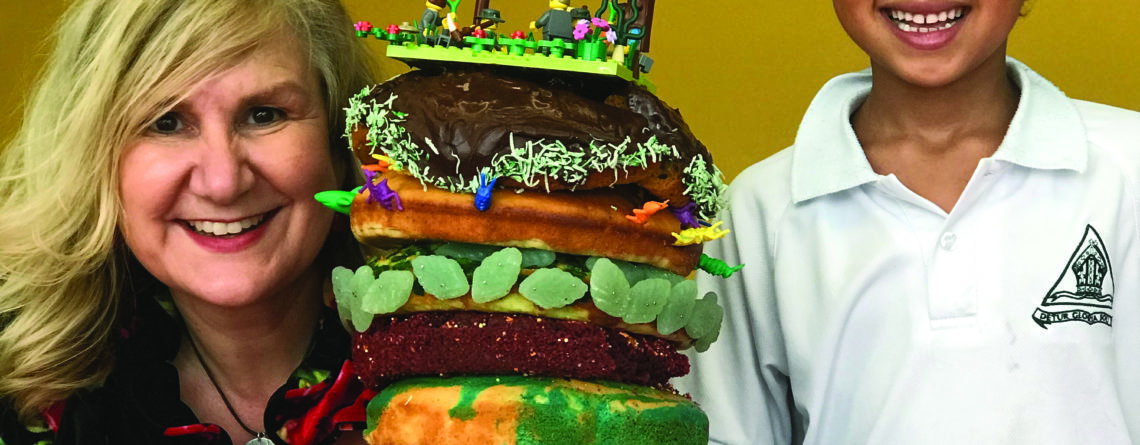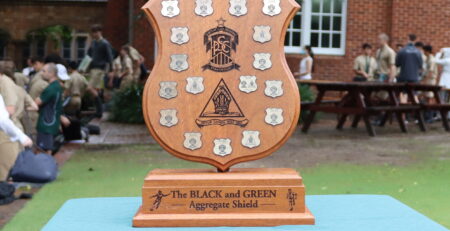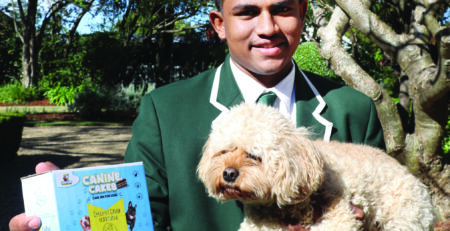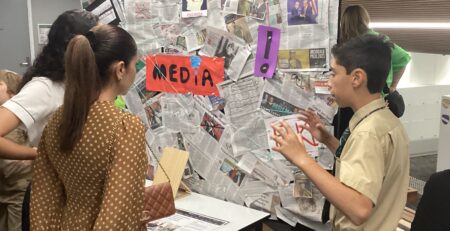Green Patch takes the cake
Why has Trinity’s environmental specialist spent so much time, thought and effort baking a cake?
Answer: to help her students understand the multitude of forces that influence how successfully their produce grows in the Junior School’s Green Patch.
It is no ordinary cake – it’s an Environmental Layer Cake whose ingredients represent the eight strata of forces that have shaped the land they are cultivating.
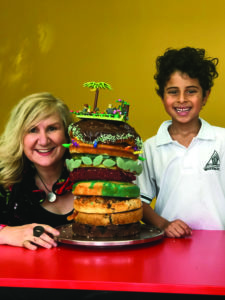
This is how Specialist Environmental Educator Mrs Melinda Bargwanna divided up each layer, and the food she chose to make her geological gateau a visual reality:
The first five layers are non-living or abiotic.
1 – Geology (choc chips and honeycomb to represent the shale and sandstone of the Summer Hill area);
2 – Soil (banana bread with gummy worms);
3 – Landform (oats and Weet-Bix);
4 – Water (vanilla cake with blue marbling);
5 – Climate (red velvet cake with yellow and orange sugar representing the sun).
The next two layers are living or biotic – flora and fauna.
6 – Vegetation (zucchini cake with mint leaves);
7 – Animals (a butter cake punctuated with plastic-coloured animals).
The final layer is cultural – the human influence.
8 – Human (a carrot cake, topped by the students themselves represented as Trinity Lego figures tending the Green Patch).
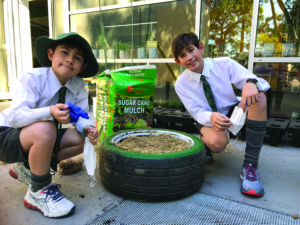
Mrs Bargwanna baked each layer of the cake as the lessons of the year unfolded, keeping it frozen as it grew. She would now be a very rich lady indeed if she was given a dollar for every time she fielded the question: “Can we eat it?”
“I am building the foundations for them so that they understand all the environmental elements that influence the Green Patch, and affect the vegetables and herbs they are growing,” she explained.
“Understanding these influences helps them to select plants that suit the conditions and increase the sustainability of the garden.”
The Green Patch has a central courtyard and Living Classroom that Kindergarten to Year 6 use as part of their lessons.
Years 5 and 6 were allocated three large wicking planter beds as well as inground beds that have transformed the School’s Seaview St border from a densely planted barrier screen to an engaging, productive space.
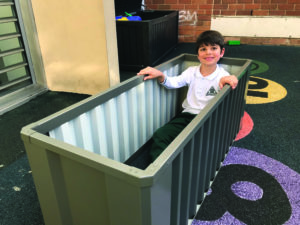
Local residents often stop for a chat to learn more about the area the boys are creating.
Years 1 to 4 are set up in playground courtyards with smaller scale wicking beds and Vegepods. They have also been experimenting with Vegebags, providing a great environment for potatoes and tomatoes.
“They have made some great videos on the whole growth process to help other students learn how to set up this wonderful Australian invention that won gold at the Chelsea Flower Show,” said Mrs Bargwanna.
Early in the Green Patch Initiative the boys conducted experiments in which the same plant species were, in turn, denied water, air, sunlight, nutrients, and soil, the latter being the one that failed to grow.
“They are recognising how essential it is to get their soil medium right; they are becoming scientists of the soil,” Mrs Bargwanna said.
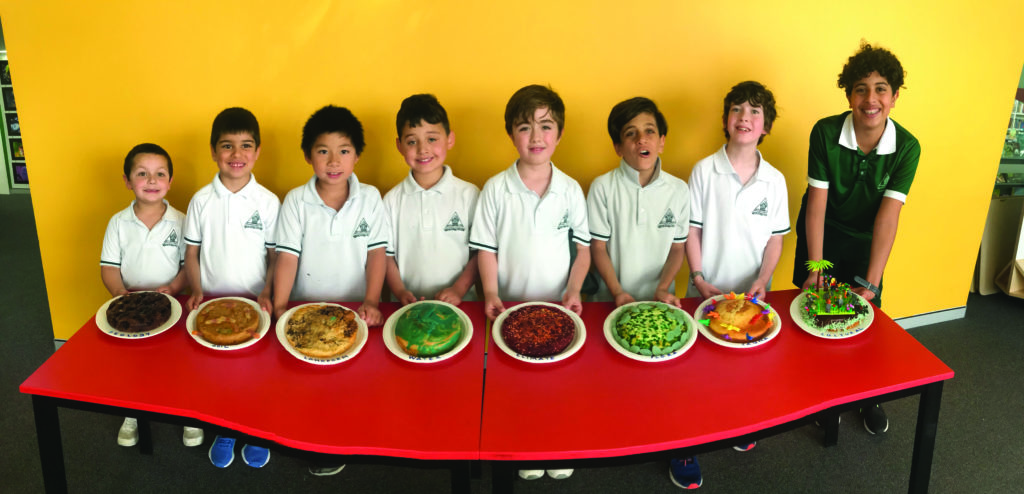
COVID-19 interrupted the rollout of the ‘Seven Ps’ process, but there was a dedicated Green Patch Day, on the first day of Spring. It gave the boys an opportunity to get off screens and experience four Ps of the patch – planning, planting, protecting, and plating.
Since returning from lockdown the boys have filled their planting beds with layers of potting mix and compost.
Planting has been designed around a six-bed crop rotation system, where vegetables are planted in family groups which have similar soil requirements; this minimises pest and disease issues.
A colour coding system has allowed students to quickly identify which family group each class is responsible for.
The groups include:
-Leafy greens including kale, broccoli, cauliflowers, spinach, silver beet, cabbages, and other heavy feeders;
-Vegie fruits of tomatoes, capsicum, chilli, and eggplants;
-Root crops, including carrots, parsnips, and onions which are lighter feeders which draw up nutrients from deeper in the soil;
-Seed Crops, such as pumpkins, zucchinis, and cucumbers will trail all over the patch and create delight from their wild habit.
-Tubers with potatoes and sweet potatoes continually need hilling up of soil to create mounds which encourage more and more potatoes to form.
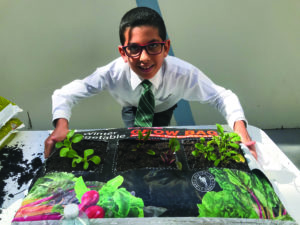
A stingless beehive was brought in to aid pollination, along with wicking beds to conserve water and vegetable pods on wheels, generously donated by the Parent Auxiliary.
The boys created their own compost by collecting food scraps, coffee grounds, leaves, grass clippings, shredded paper, and egg shells.
“I want to teach the boys skills and concepts to give them hope that they can make a difference to current issues, finding solutions and to become world changers,” Mrs Bargwanna said.
“By educating them early and making them environmentally aware we can give them a great head start in learning to live sustainably.
“I hope this will have a ripple effect on families and communities, and we’ll see some great things come out of our Green Patch Initiative.”

